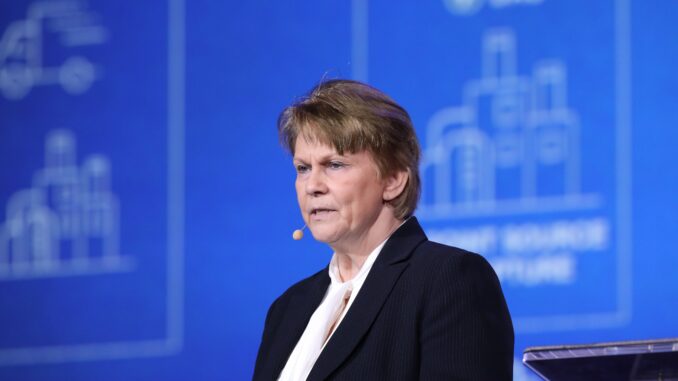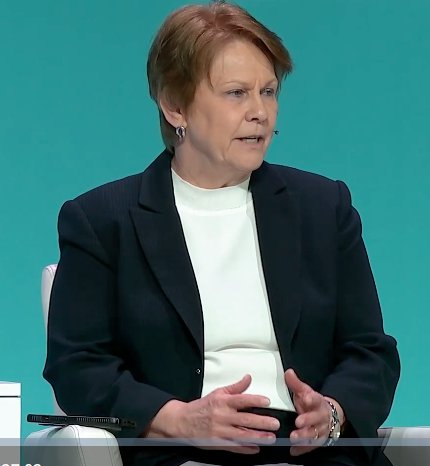
Any relationship, whether personal or professional, is only as strong and stable as the communication between its parties.
If you ask Vicki Hollub, president and CEO of Occidental Petroleum, that is especially true for the oil and gas industry’s communication with the world it serves.

“As many of us know, most people don’t listen to us very carefully,” Hollub said. “[For example,] when we were saying, ‘Tightness is coming in the market. We need to react.'” But few people listened until the price of a barrel of crude oil rose to over $100, she said.
“One thing I think people need to listen to and we need more people to understand is that we can use CO2 for advanced oil recovery,” Hollub said. “When I say that we want to use CO2 for advanced oil recovery, some people immediately respond, ‘No, we don’t want any more oil production.'”
Discussing new business strategies to achieve net-zero at CERAWeek by S&P Global, Hollub was eager to explain why using CO2 is especially advantageous in advanced oil recovery.
“First of all, when you use CO2 in an enhanced oil recovery reservoir, you do sequestering and generate net-zero carbon oil because it takes more CO2 injected into the reservoir to produce a barrel of oil than that barrel of oil emits when it is used. So, it’s net-zero,” she explained. “Companies like United Airlines have recognized this. They want to use it to generate jet fuel for their planes, so they are a partner with us.”
The second benefit, according to Hollub, is that it is much better for the world to generate oil from existing reservoirs than it is to develop all-new reservoirs. “When you have existing reservoirs, infrastructure, pipelines and all the facilities needed to put incremental oil through those facilities, that’s a lower-carbon footprint,” she said. “That means you’re not going to have to replicate those facilities again for a new reservoir somewhere else that doesn’t already have that infrastructure. So, if we are going to look at what is best for the world, it is best for the world to do it this way.”
From big crises come bigger opportunities
Hollub emphasized the importance of industry leaders having a firm understanding of the amount of carbon required for all of their activities.
“Again, building a new facility with new infrastructure, pipelines and all of that somewhere else is not as low of a carbon footprint as developing oil out of existing reservoirs where the infrastructure is already there,” she accentuated. “The best way for the U.S. to have geopolitical leverage is to be energy independent. For the U.S. to continue to be in a position to be energy independent, using CO2 for advanced oil recovery in existing U.S. reservoirs is the best scenario. Primary production is currently only recovering about 10 percent of the hydrocarbons in shale reservoirs; we are leaving 90 percent of the oil in those reservoirs. By using CO2, we can almost double that recovery.”
Some conventional reservoirs in the U.S. that have used only primary production or water flooding are still capable of becoming CO2-flooded, Hollub said.
“When you look at the combination of the conventional production and opportunities in the shale for CO2-enhanced oil recovery to generate net-zero carbon, they are critically important for continuing our energy independence for decades to come,” she stated. “If we could come together as much for climate change as we have come together for the current crisis the world is facing [in Ukraine], then we could solve it. We just have to be very open and transparent about what the data tells us and what the data actually is.”
Source: Bicmagazine.com



